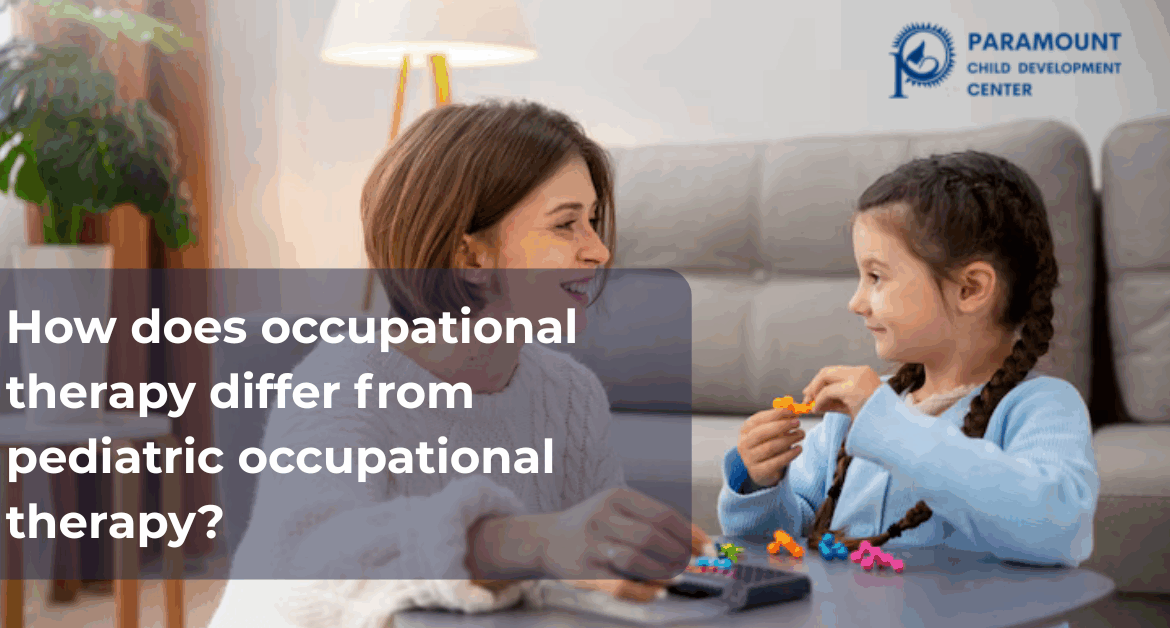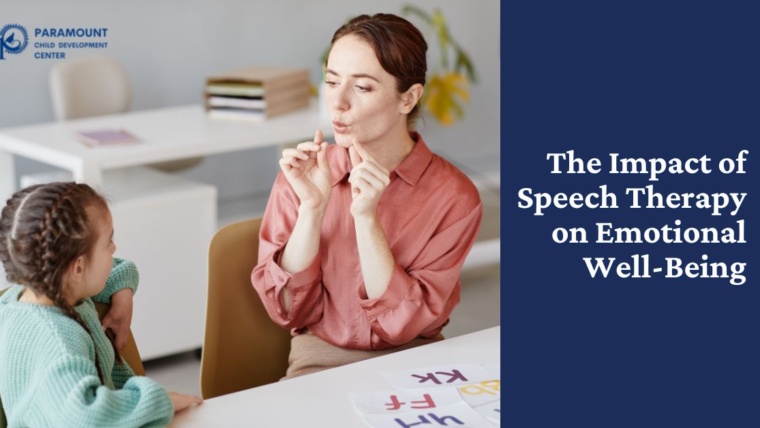Occupational therapy is a branch of health care that services all age categories as per their requirements as to daily activities or, what is called, occupations deemed important by those individuals. Little did you know, however, that there is a specific branch called pediatric occupational therapy? This one actually directs all its focus on children, thus being an independent entity from the others because of the entirely different developmental needs.
In this blog, we will seek to answer what occupational therapy means in general and how it compares with pediatric occupational therapy, plus discuss why this child occupational therapy is so significant in regards to the children’s growing, learning, and thriving. So parents and caregivers out there wondering about occupational therapy for kids or what a pediatric occupational therapist does might want to read on!
What is Occupational Therapy?
Occupational therapy (OT) will be a treatment or method through which people will be helped to develop, recover, or maintain particular skills one would need to live independently and partake fully in everyday life. These “occupations” may include:
- Dressing and grooming
- Cooking and eating
- Working or going to school
- Playing and socializing
- Management of domestic tasks
Occupational therapists assist individuals, who are hindered by sickness, injury, or disability and at times by developmental delays, to gain access to tailored interventions so that they are capable of maximizing their physical, sensory, or cognitive functioning which normally gets in the way of their regular functioning.
If an adult has a stroke, they would possibly undergo occupational therapy to learn again how to use their hands properly; or someone with arthritis would undergo treatment to eliminate pain as well as enhance use in their joints.
What is Pediatric Occupational Therapy?
Pediatric vocational therapy is only a branch of professional therapy which is especially used for children in the age group from birth to young adulthood.The therapy seeks to improve and increase children’s skills required for them to perform better in school, play, or daily activity.
While occupational therapy in adults tends to be more rehabilitative following disease or injury, pediatric occupational therapy is preventive and developmental; it seeks to fill the gaps or deficits the child has in:
Fine motor abilities, such as writing, buttoning his shirts, or cutting
Gross motor skills like running, jumping, or climbing
Sensory processing, such as being hypersensitive to sound or texture
Social skills and self-care skills
Therefore, pediatric occupational therapy services will essentially collaborate with the children and families, schools, and other health care providers to establish enjoyable and active therapy sessions with individual considerations.
Key Differences Between Occupational Therapy and Pediatric Occupational Therapy
Some comprehensive differences between professional therapy in general and pediatric vocational therapy are given below:
1. Age Group Focus
- Occupational Therapy: It is involved in all stages of life, from babies to elderly patients. Rehabilitation after accidents, chronic illness management and geriatric rehabilitation are all included here.
- Pediatric Occupational Therapy: This is with children-from infants to those who are just in their young adult state. Focuses on how to help them grow, learn and achieve developmental milestones.
2. Therapy Goals
- Occupational Therapy: Again, the primary focus is on recovering lost ability or learning through physical or mental adaptation due to illness or injury. On the road toward independence.
- Pediatric Occupational Therapy: Primarily lends towards newly acquired skills to avert future complications. Bent towards helping the child overcome delays or setbacks toward his maximum potential.
3. Approach and techniques
- Occupational Therapy: Adult, or older-client altered techniques, which can include exercises, adaptive aids, or home modification.
- Pediatric Occupational Therapy: Presumes play-based, fantasy, interactive techniques. Treatment can be games, activities, sensory exercise and even enjoyable exercises to enhance the child’s sensitivity to treatment.
4. Specializations
- Occupational Therapy: Presumed are normal conditions, medical and functional conditions, stroke rehabilitation, arthritis, traumatic brain injury, mental illness, and geriatrics.
- Pediatric Vocational therapy: Such specific delays exist not only in the context of development, but also have disorders such as sensory processing disorders, autism spectrum disorders, ADHD, cerebral palsy and other pediatric conditions.
5. Environment
- Occupational therapy: These are done inside hospitals, clinics, rehabilitation units, nursing homes or patients.
- Pediatric Occupational Therapy: Therapies happen mostly in child-friendly environments, like schools, clinics meant for kids, therapy units, or at home among the toys and activity materials.
Importance of Pediatric Occupational Therapy for children
Kids develop rapidly, and early intervention can have a profound impact on what they would be able to accomplish later in life, even their own health. Pediatric occupational therapy allows children to acquire bodily, sensory, and emotional skills so as to care for themselves, which include the following:
- Dressing by themselves
- Writing with the pencil and holding it
- Eating without assistance
- Playing with their friends
- Manages their emotions, too, and behavior
A pediatric professional therapist cares not only for motor skills but also sensory integration. These children are very sensitive to light, sound, or even touch, which affect their learning and socialization. The pediatric OT will handle those sensory issues, so learning to manage in multi-diverse settings is handled as well.
When Might a Child Need Pediatric Occupational Therapy?
Or helps along therapy with delayed milestones to help in the area of sitting, crawling, or walking. Other fine motor difficulties with holding a spoon or button of a shirt. They have writing or homework difficulties. They could interfere with the senses where they would cover their ears, or avoid touch with certain textures. They have problems with coordination or maybe balance. Self-care skills or daily routine skill problems or social skills may affect these children. Probably behavioral issues with some sensory processing or developmental disorder.
A pediatric occupational therapist early treatment sometimes can remove some of those hindrances so the child can function better at home, in school, or in play.
How Pediatric Occupational Therapists Work?
A pediatric vocational therapist will begin with the evaluation, checking the child’s strength and challenges: these include observation in the child’s game, demonstrating daily life activities, and giving some standardized tests where applicable is applied.
The evaluation gives a good profile, and the doctor prepares a specific plan, which may include:
- Fine motor tasks (grip and hand-eye coordination)
- Gross motor tasks (balance, strength, coordination)
- Sensory integration for regulation of sensitivity
- Attention and social skills enhancement strategies
- Parent training so that the therapy may go on at home
Entertainment is made in the form of toys, sports and art and craft materials that are interesting to children. At the end of therapy, the physician can share with parents, teachers and other professionals how to support the child’s treatment.
Benefits of Pediatric Occupational Therapy
- Motor skills: Allow children to have movement and control over their bodies and make life easier for them in daily tasks.
- Sensory processing: Allow children to cope with or face sensory issues.
- Communication and social skills: The therapy allows for coping with and expressing oneself around other people.
- Increased independence: The child learns behaviors aimed toward self-care activities independently.
- School success: Improvement of fine motor skills will carry over to schoolwork and writing.
Conclusion
While both occupational therapy and pediatric occupational therapy address enabling functioning in daily life, they differ greatly in focus, processes, and methods. Pediatric vocational therapy is a medical profession that aims to teach children the skills that are necessary for them, healthy and happily, to enjoy their childhood and adulthood.
If you are thinking about starting your child in professional therapy or if you feel that your child needs this type of support, consult a pediatric professional doctor. Initial intervention can mean too much in your child’s life, helping to overcome obstacles and reach the entire capacity.



